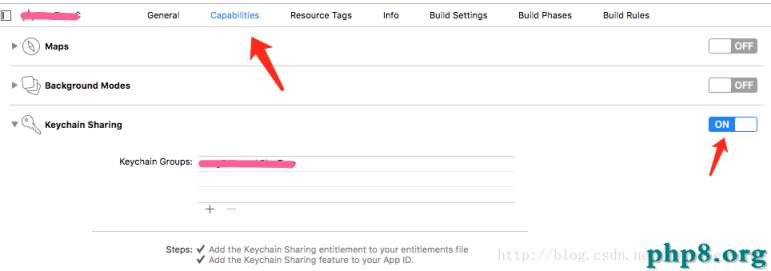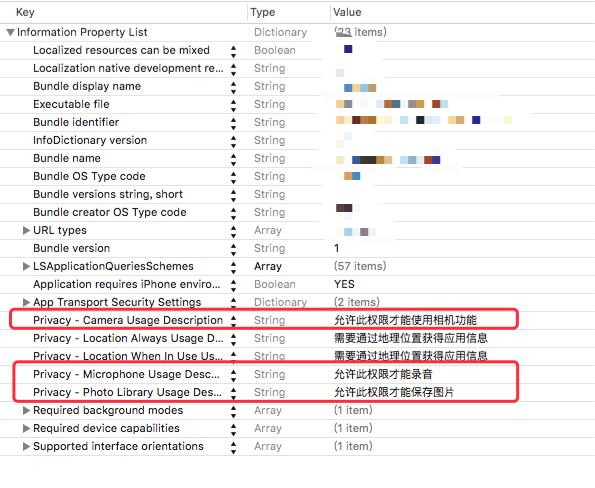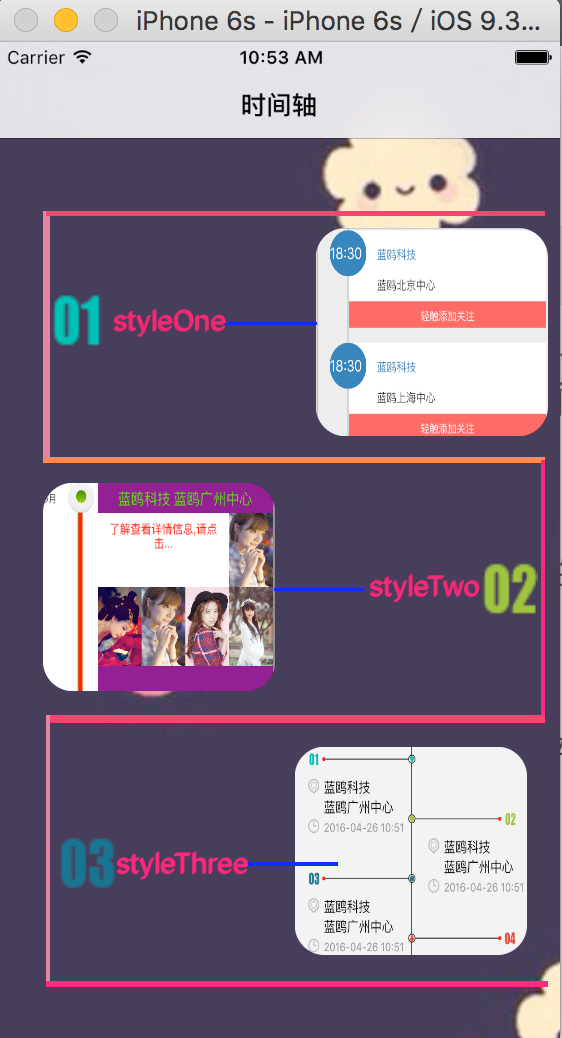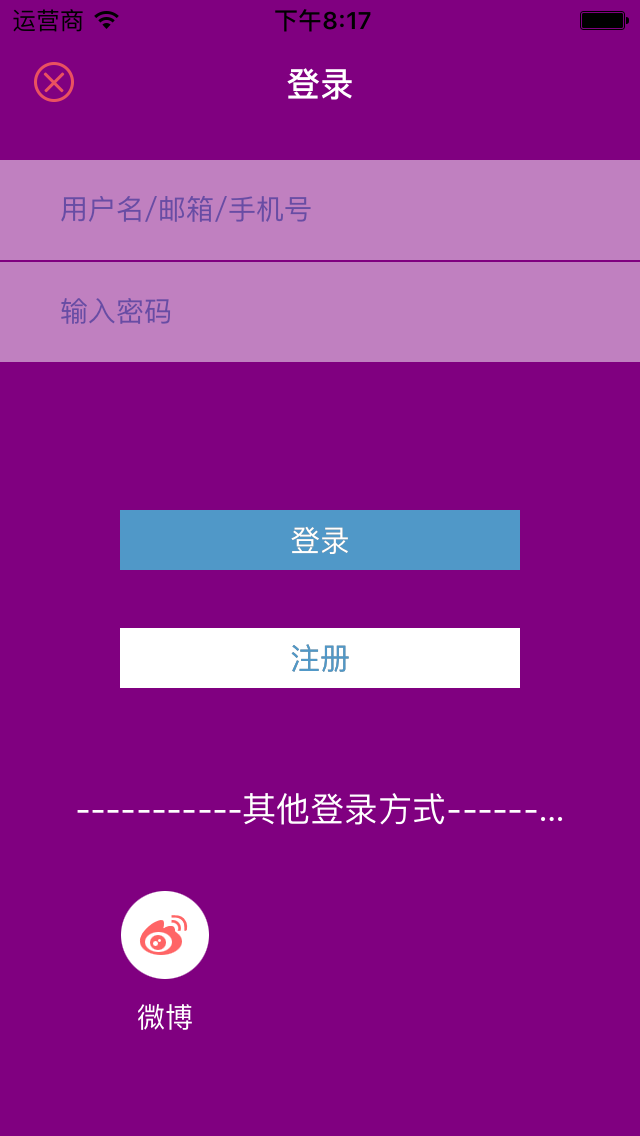詳解iOS獲取通訊錄的4種方式
本文實例為大家分享了iOS獲取通訊錄的4種方式,供大家參考,具體內容如下
使用場景
一些App通過手機號碼來推薦好友,如 微博、支付寶
首先客戶端會獲取通訊錄中的所有手機號然後將這些手機號提交到App服務器中,服務器會查找每個手機號對應的App賬號如QQ號碼返回到客戶端,然後客戶端根據服務器返回的賬號列表來推薦好友。
獲取聯系人方式
方案一:AddressBookUI.framework框架
提供了聯系人列表界面、聯系人詳情界面、添加聯系人界面等
一般用於選擇聯系人
方案二:AddressBook.framework框架:
沒有提供UI界面,需要自己搭建聯系人界面
純C語言的API, 僅僅是獲得聯系人數據
大部分數據類型是Core Foundation
從iOS6 開始,需要得到用戶的授權才能訪問通訊錄
方案三:第三方框架:RHAddressBook
對 AddressBook.framework 進行封裝
方案四:iOS9.0最新通訊錄框架
ContactsUI.framework : 方案1的替代品,特點: 面向對象,使用簡單,有界面
Contacts.framework: 方案2的替代品, 特點:面向對象,使用簡單,五界面
方案一:AddressBookUI.framework
實現步驟:
1.創建選擇聯系人的控制器
2.設置代理:用來接收用戶選擇的聯系人信息
3.彈出聯系人控制器
4.實現代理方法
5.在對應的代理方法中獲取聯系人信息
AddressBook.frame實現步驟:
1.請求授權
2.判斷授權狀態如果已授權則繼續,如果未授權則提示用戶
3.創建通訊錄對象
4.從通訊錄中獲取所有的聯系人
5.遍歷所有的聯系人
6.釋放不再使用的對象
AddreesBook.framework具體實現:
1. AppDelegate 應用啟動時請求授權
#import "AppDelegate.h"
#import <AddressBook/AddressBook.h>
@interface AppDelegate ()
@end
@implementation AppDelegate
- (BOOL)application:(UIApplication *)application didFinishLaunchingWithOptions:(NSDictionary *)launchOptions {
// Override point for customization after application launch.
[self requestAuthorizationAddressBook];
return YES;
}
- (void)requestAuthorizationAddressBook {
// 判斷是否授權
ABAuthorizationStatus authorizationStatus = ABAddressBookGetAuthorizationStatus();
if (authorizationStatus == kABAuthorizationStatusNotDetermined) {
// 請求授權
ABAddressBookRef addressBookRef = ABAddressBookCreate();
ABAddressBookRequestAccessWithCompletion(addressBookRef, ^(bool granted, CFErrorRef error) {
if (granted) { // 授權成功
} else { // 授權失敗
NSLog(@"授權失敗!");
}
});
}
}
@end
2. iOS10 需要在Info.plist配置NSContactsUsageDescription
<key>NSContactsUsageDescription</key> <string>請求訪問通訊錄</string>
3. ViewController
#import "ViewController.h"
#import <AddressBook/AddressBook.h>
@interface ViewController ()
@end
@implementation ViewController
- (void)viewDidLoad {
[super viewDidLoad];
}
- (void)touchesBegan:(NSSet<UITouch *> *)touches withEvent:(UIEvent *)event {
// 1. 判讀授權
ABAuthorizationStatus authorizationStatus = ABAddressBookGetAuthorizationStatus();
if (authorizationStatus != kABAuthorizationStatusAuthorized) {
NSLog(@"沒有授權");
return;
}
// 2. 獲取所有聯系人
ABAddressBookRef addressBookRef = ABAddressBookCreate();
CFArrayRef arrayRef = ABAddressBookCopyArrayOfAllPeople(addressBookRef);
long count = CFArrayGetCount(arrayRef);
for (int i = 0; i < count; i++) {
//獲取聯系人對象的引用
ABRecordRef people = CFArrayGetValueAtIndex(arrayRef, i);
//獲取當前聯系人名字
NSString *firstName=(__bridge NSString *)(ABRecordCopyValue(people, kABPersonFirstNameProperty));
//獲取當前聯系人姓氏
NSString *lastName=(__bridge NSString *)(ABRecordCopyValue(people, kABPersonLastNameProperty));
NSLog(@"--------------------------------------------------");
NSLog(@"firstName=%@, lastName=%@", firstName, lastName);
//獲取當前聯系人的電話 數組
NSMutaleArray *phoneArray = [[NSMutableArray alloc]init];
ABMultiValueRef phones = ABRecordCopyValue(people, kABPersonPhoneProperty);
for (NSInteger j=0; j<ABMultiValueGetCount(phones); j++) {
NSString *phone = (__bridge NSString *)(ABMultiValueCopyValueAtIndex(phones, j));
NSLog(@"phone=%@", phone);
[phoneArray addObject:phone];
}
//獲取當前聯系人的郵箱 注意是數組
NSMutableArray *emailArray = [[NSMutableArray alloc]init];
ABMultiValueRef emails= ABRecordCopyValue(people, kABPersonEmailProperty);
for (NSInteger j=0; j<ABMultiValueGetCount(emails); j++) {
NSString *email = (__bridge NSString *)(ABMultiValueCopyValueAtIndex(emails, j));
NSLog(@"email=%@", email);
[emailArray addObject:email];
}
//獲取當前聯系人中間名
NSString *middleName=(__bridge NSString*)(ABRecordCopyValue(people, kABPersonMiddleNameProperty));
//獲取當前聯系人的名字前綴
NSString *prefix=(__bridge NSString*)(ABRecordCopyValue(people, kABPersonPrefixProperty));
//獲取當前聯系人的名字後綴
NSString *suffix=(__bridge NSString*)(ABRecordCopyValue(people, kABPersonSuffixProperty));
//獲取當前聯系人的昵稱
NSString *nickName=(__bridge NSString*)(ABRecordCopyValue(people, kABPersonNicknameProperty));
//獲取當前聯系人的名字拼音
NSString *firstNamePhoneic=(__bridge NSString*)(ABRecordCopyValue(people, kABPersonFirstNamePhoneticProperty));
//獲取當前聯系人的姓氏拼音
NSString *lastNamePhoneic=(__bridge NSString*)(ABRecordCopyValue(people, kABPersonLastNamePhoneticProperty));
//獲取當前聯系人的中間名拼音
NSString *middleNamePhoneic=(__bridge NSString*)(ABRecordCopyValue(people, kABPersonMiddleNamePhoneticProperty));
//獲取當前聯系人的公司
NSString *organization=(__bridge NSString*)(ABRecordCopyValue(people, kABPersonOrganizationProperty));
//獲取當前聯系人的職位
NSString *job=(__bridge NSString*)(ABRecordCopyValue(people, kABPersonJobTitleProperty));
//獲取當前聯系人的部門
NSString *department=(__bridge NSString*)(ABRecordCopyValue(people, kABPersonDepartmentProperty));
//獲取當前聯系人的生日
NSString *birthday=(__bridge NSDate*)(ABRecordCopyValue(people, kABPersonBirthdayProperty));
//獲取當前聯系人的備注
NSString *notes=(__bridge NSString*)(ABRecordCopyValue(people, kABPersonNoteProperty));
//獲取創建當前聯系人的時間 注意是NSDate
NSDate *creatTime=(__bridge NSDate*)(ABRecordCopyValue(people, kABPersonCreationDateProperty));
//獲取最近修改當前聯系人的時間
NSDate *alterTime=(__bridge NSDate*)(ABRecordCopyValue(people, kABPersonModificationDateProperty));
//獲取地址
ABMultiValueRef address = ABRecordCopyValue(people, kABPersonAddressProperty);
for (int j=0; j<ABMultiValueGetCount(address); j++) {
//地址類型
NSString *type = (__bridge NSString *)(ABMultiValueCopyLabelAtIndex(address, j));
NSDictionary * tempDic = (__bridge NSDictionary *)(ABMultiValueCopyValueAtIndex(address, j));
//地址字符串,可以按需求格式化
NSString *adress = [NSString stringWithFormat:@"國家:%@\n省:%@\n市:%@\n街道:%@\n郵編:%@",[temDic valueForKey:(NSString*)kABPersonAddressCountryKey],[tempDic valueForKey:(NSString*)kABPersonAddressStateKey],[tempDic valueForKey:(NSString*)kABPersonAddressCityKey],[tempDic valueForKey:(NSString*)kABPersonAddressStreetKey],[tempDic valueForKey:(NSString*)kABPersonAddressZIPKey]];
}
//獲取當前聯系人頭像圖片
NSData *userImage=(__bridge NSData*)(ABPersonCopyImageData(people));
//獲取當前聯系人紀念日
NSMutableArray *dateArr = [[NSMutableArray alloc]init];
ABMultiValueRef dates= ABRecordCopyValue(people, kABPersonDateProperty);
for (NSInteger j=0; j<ABMultiValueGetCount(dates); j++) {
//獲取紀念日日期
NSDate *data =(__bridge NSDate*)(ABMultiValueCopyValueAtIndex(dates, j));
//獲取紀念日名稱
NSString *str =(__bridge NSString*)(ABMultiValueCopyLabelAtIndex(dates, j));
NSDictionary *tempDic = [NSDictionary dictionaryWithObject:data forKey:str];
[dateArr addObject:tempDic];
}
}
}
@end
4. 運行結果
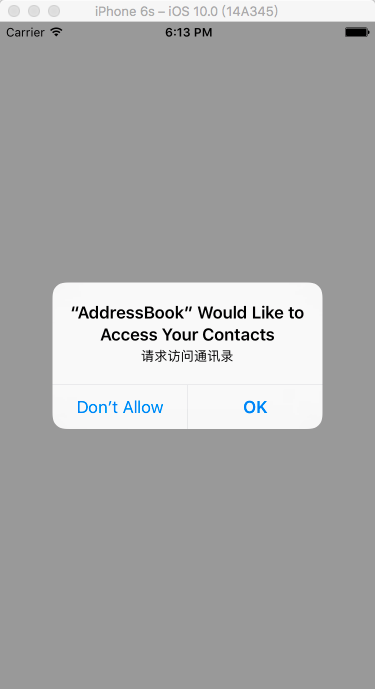
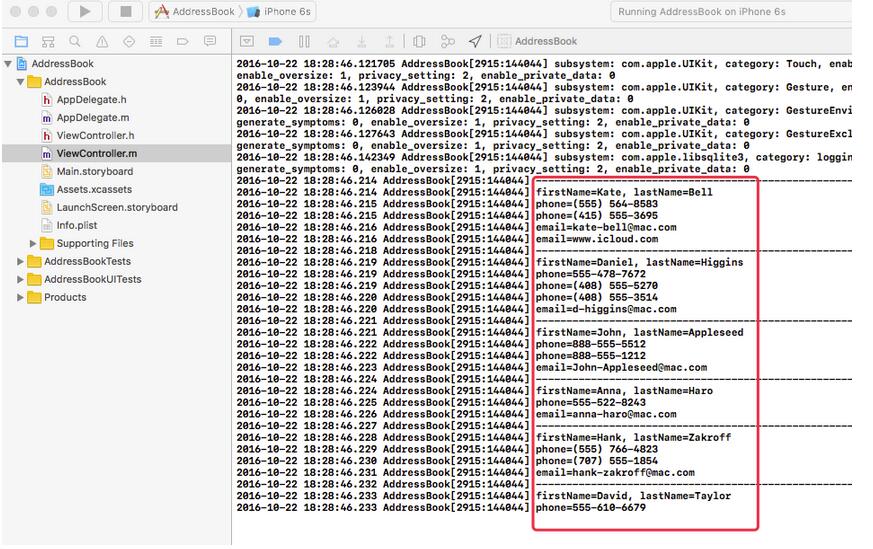
第三方框架:RHAddressBook
https://github.com/heardrwt/RHAddressBook
該框架使用的MRC來管理內存的,如果直接將源代碼拖入進去需要為每個文件設置編譯標記:-fno-objc-arc, 設置完還會報錯,該項目使用的一些方法過於古老,很多都不支持了,所以這種方式不采用; 可以將該項目打成靜態庫的方式;也可以直接將項目拖入到自己的工程中作為一個依賴
1.直接將RHAddressBook.xcodeproj拖入到工程中
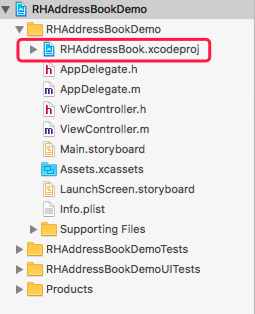
2.添加Target Dependencies和Link Binary With Libraries
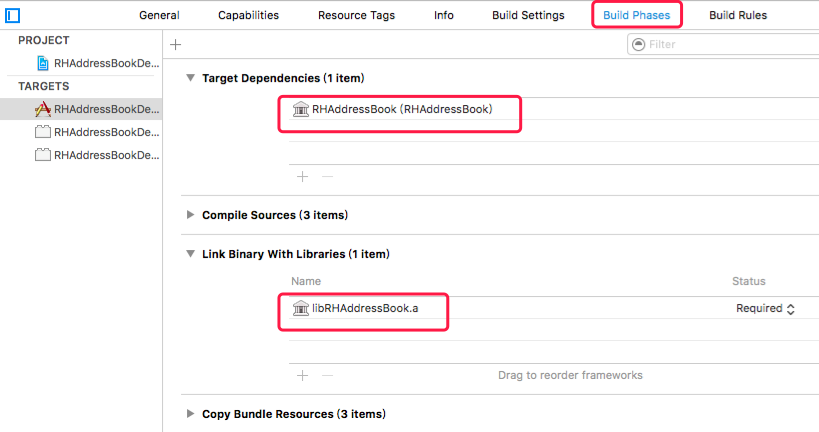
3.Build Settings—> Other Linker Flags : -ObjC
用於解決系統分類找不到方法的錯誤

4.iOS10 需要在Info.plist配置NSContactsUsageDescription
<key>NSContactsUsageDescription</key> <string>請求訪問通訊錄</string>
App啟動時請求授權訪問通訊錄
#import "AppDelegate.h"
#import <RHAddressBook/RHAddressBook.h>
@interface AppDelegate ()
@end
@implementation AppDelegate
- (BOOL)application:(UIApplication *)application didFinishLaunchingWithOptions:(NSDictionary *)launchOptions {
// Override point for customization after application launch.
[self requestAuthorizationForAddressBook];
return YES;
}
- (void)requestAuthorizationForAddressBook {
RHAddressBook *ab = [[RHAddressBook alloc] init];
if ([RHAddressBook authorizationStatus] == RHAuthorizationStatusNotDetermined){
[ab requestAuthorizationWithCompletion:^(bool granted, NSError *error) {
if (granted) {
} else {
NSLog(@"請求授權拒絕");
}
}];
}
}
@end
獲取所有聯系人的信息:姓名、手機號等
#import "ViewController.h"
#import <RHAddressBook/RHAddressBook.h>
#import <RHAddressBook/AddressBook.h>
@interface ViewController ()
@end
@implementation ViewController
- (void)viewDidLoad {
[super viewDidLoad];
}
- (void)touchesBegan:(NSSet<UITouch *> *)touches withEvent:(UIEvent *)event {
RHAddressBook *addressBook = [[RHAddressBook alloc] init];
if ([RHAddressBook authorizationStatus] != RHAuthorizationStatusAuthorized){
NSLog(@"沒有授權");
return;
}
NSArray *peopleArray= addressBook.people;
for (int i = 0; i < peopleArray.count; i++) {
RHPerson *people = (RHPerson *)peopleArray[i];
NSLog(@"%@", people.name);
RHMultiStringValue *phoneNumbers = people.phoneNumbers;
for (int i = 0; i < phoneNumbers.count; i++) {
NSString* label= [phoneNumbers labelAtIndex:i];
NSString* value= [phoneNumbers valueAtIndex:i];
NSLog(@"label=%@, value=%@", label, value);
}
NSLog(@"----------------------------------------------");
}
}
@end
運行結果:
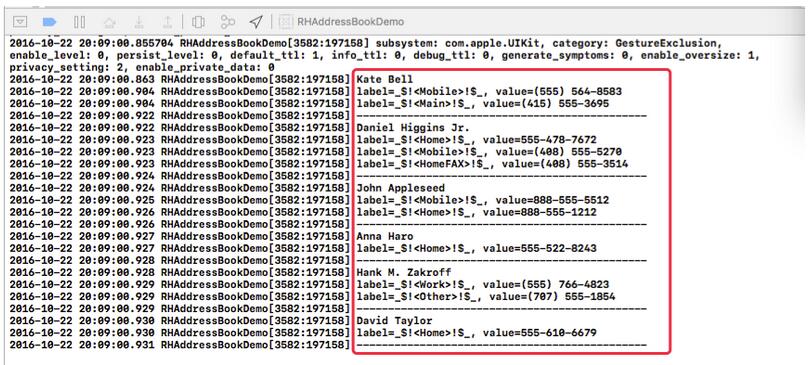
ContactsUI.framework
#import "ViewController.h"
#import <ContactsUI/ContactsUI.h>
@interface ViewController () <CNContactPickerDelegate>
@end
@implementation ViewController
- (void)viewDidLoad {
[super viewDidLoad];
CNContactPickerViewController *contactPickerViewController = [[CNContactPickerViewController alloc] init];
contactPickerViewController.delegate = self;
[self presentViewController:contactPickerViewController animated:YES completion:nil];
}
// 如果實現該方法當選中聯系人時就不會再出現聯系人詳情界面, 如果需要看到聯系人詳情界面只能不實現這個方法,
- (void)contactPicker:(CNContactPickerViewController *)picker didSelectContact:(CNContact *)contact {
NSLog(@"選中某一個聯系人時調用---------------------------------");
[self printContactInfo:contact];
}
// 同時選中多個聯系人
- (void)contactPicker:(CNContactPickerViewController *)picker didSelectContacts:(NSArray<CNContact *> *)contacts {
for (CNContact *contact in contacts) {
NSLog(@"================================================");
[self printContactInfo:contact];
}
}
- (void)printContactInfo:(CNContact *)contact {
NSString *givenName = contact.givenName;
NSString *familyName = contact.familyName;
NSLog(@"givenName=%@, familyName=%@", givenName, familyName);
NSArray * phoneNumbers = contact.phoneNumbers;
for (CNLabeledValue<CNPhoneNumber*>*phone in phoneNumbers) {
NSString *label = phone.label;
CNPhoneNumber *phonNumber = (CNPhoneNumber *)phone.value;
NSLog(@"label=%@, value=%@", label, phonNumber.stringValue);
}
}
// 注意:如果實現該方法,上面那個方法就不能實現了,這兩個方法只能實現一個
//- (void)contactPicker:(CNContactPickerViewController *)picker didSelectContactProperty:(CNContactProperty *)contactProperty {
// NSLog(@"選中某個聯系人的某個屬性時調用");
//}
@end
選擇單個聯系人時運行效果:


選擇多個聯系人的界面:
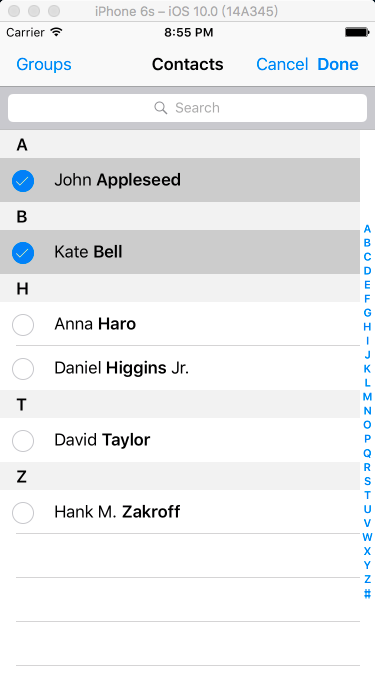

Contact.framework
iOS10 需要在Info.plist配置NSContactsUsageDescription
<key>NSContactsUsageDescription</key> <string>請求訪問通訊錄</string>
應用啟動時請求授權:
#import "AppDelegate.h"
#import <Contacts/Contacts.h>
@interface AppDelegate ()
@end
@implementation AppDelegate
- (BOOL)application:(UIApplication *)application didFinishLaunchingWithOptions:(NSDictionary *)launchOptions {
// Override point for customization after application launch.
[self requestAuthorizationForAddressBook];
return YES;
}
- (void)requestAuthorizationForAddressBook {
CNAuthorizationStatus authorizationStatus = [CNContactStore authorizationStatusForEntityType:CNEntityTypeContacts];
if (authorizationStatus == CNAuthorizationStatusNotDetermined) {
CNContactStore *contactStore = [[CNContactStore alloc] init];
[contactStore requestAccessForEntityType:CNEntityTypeContacts completionHandler:^(BOOL granted, NSError * _Nullable error) {
if (granted) {
} else {
NSLog(@"授權失敗, error=%@", error);
}
}];
}
}
@end
獲取通訊錄信息
#import "ViewController.h"
#import <Contacts/Contacts.h>
@interface ViewController ()
@end
@implementation ViewController
- (void)viewDidLoad {
[super viewDidLoad];
}
- (void)touchesBegan:(NSSet<UITouch *> *)touches withEvent:(UIEvent *)event {
CNAuthorizationStatus authorizationStatus = [CNContactStore authorizationStatusForEntityType:CNEntityTypeContacts];
if (authorizationStatus == CNAuthorizationStatusAuthorized) {
NSLog(@"沒有授權...");
}
// 獲取指定的字段,並不是要獲取所有字段,需要指定具體的字段
NSArray *keysToFetch = @[CNContactGivenNameKey, CNContactFamilyNameKey, CNContactPhoneNumbersKey];
CNContactFetchRequest *fetchRequest = [[CNContactFetchRequest alloc] initWithKeysToFetch:keysToFetch];
CNContactStore *contactStore = [[CNContactStore alloc] init];
[contactStore enumerateContactsWithFetchRequest:fetchRequest error:nil usingBlock:^(CNContact * _Nonnull contact, BOOL * _Nonnull stop) {
NSLog(@"-------------------------------------------------------");
NSString *givenName = contact.givenName;
NSString *familyName = contact.familyName;
NSLog(@"givenName=%@, familyName=%@", givenName, familyName);
NSArray *phoneNumbers = contact.phoneNumbers;
for (CNLabeledValue *labelValue in phoneNumbers) {
NSString *label = labelValue.label;
CNPhoneNumber *phoneNumber = labelValue.value;
NSLog(@"label=%@, phone=%@", label, phoneNumber.stringValue);
}
// *stop = YES; // 停止循環,相當於break;
}];
}
@end
運行效果:
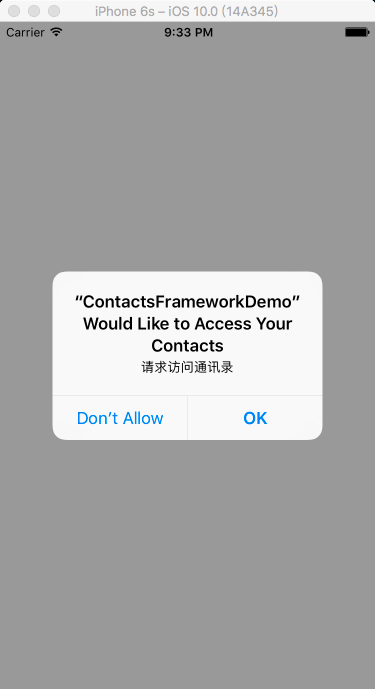
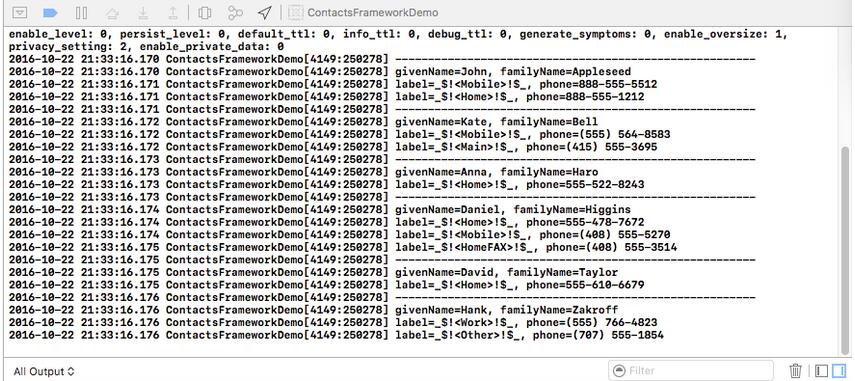
以上就是本文的全部內容,希望對大家的學習有所幫助,也希望大家多多支持本站。

